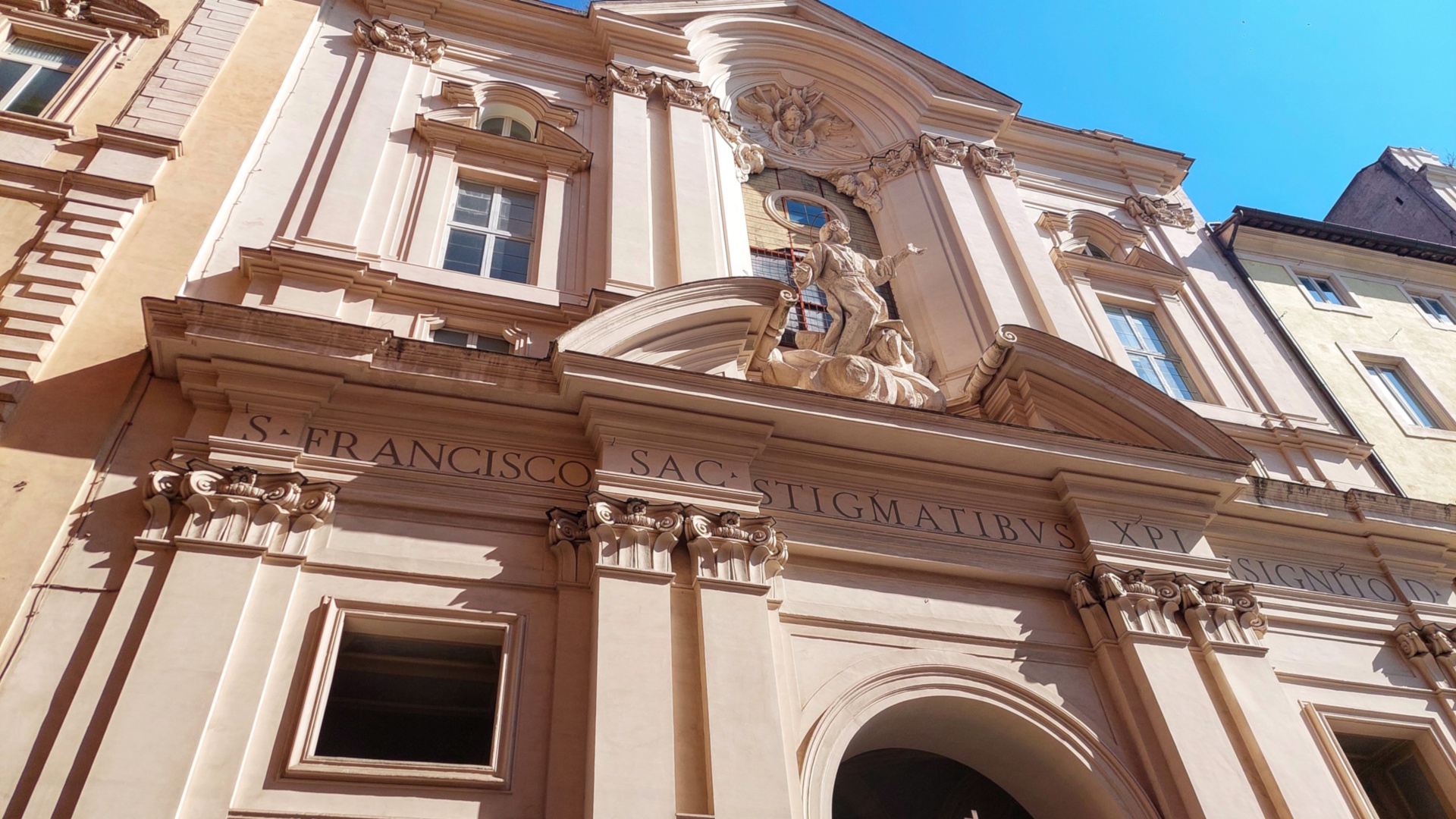
The present Baroque church a few steps from the Pantheon and the Sacred Area in Largo di Torre Argentina stands on the site of an earlier sacred building dedicated to the Forty Martyrs of Sebaste, a group of Roman soldiers martyred in 320 by Licinus. An epigraph of 1298, kept in the sacristy, mentions it with the name “Santi Quaranta Martiri de calcarario”. A calcararius was someone who made calx, or lime for mortar and plaster: in the Rome of the Middle Ages, several lime-makers worked their kilns in this area, which was called “Calcarario” for this reason.
In 1597, the church was entrusted to the Confraternita delle Sacre Stimmate di San Francesco (Confraternity of the Stigmata of St. Francis), which was taking its first steps in those years. In the first quarter of the 18th century, the confraternity had it rebuilt in its present form, also giving it its new name. The project bears the signature of Giovambattista Contini, one of the protagonists of the last phase of the Roman Baroque – a multifaceted personality who worked not only in the field of architecture but also in theatre and hydraulic engineering.
The façade-portico with two storey was designed by Antonio Canevari, who was inspired by Pietro da Cortona’s work for the church of Santa Maria in Via Lata. A window niche frames the theatrical representation of St. Francis receiving the stigmata: the large stucco statue is generally attributed to Antonio Raggi, for about thirty years a collaborator of Gian Lorenzo Bernini. The interior has a single nave with three chapels on each side and is rich in pictorial and decorative elements, e.g. an ivory crucifix attributed to Alessandro Algardi, the depiction of the Holy Forty Martyrs of Sebaste by Giacinto Brandi and the wall monument to Ladislaus Constantine Wasa (the son of the King of Poland who died in 1698). The sacristy houses a precious silver reliquary containing the blood of St. Francis of Assisi. In the church basement there is an ossuary dating back to the 16th century.
A curiosity: in 1870, in the aftermath of the Breach of Porta Pia, a search began inside the church for the body of Mameli, the young author of the Hymn of Italy, who had died in 1849 in the Santissima Trinità hospital following wounds sustained during the defense of the Roman Republic. His body had been brought here from the church of Santa Maria in Monticelli, his first burial place. The remains were first taken to the Verano monumental cemetery and then, in 1941, to the Garibaldi Ossuary Mausoleum on the Janiculum Hill.
Information
Holy Mass Schedule
Monday: 13:00
Tuesday: 13:00
Wednesday: 13:00
Thursday: 13:00
Friday: 13:00
Saturday and days before holidays: 18:45
Sunday and holy days of obligation: 11:30
Times are subject to change, so please always contact the Church.
 Condividi
Condividi
Location
To find out about all accessibility services, visit the Rome accessible section.











































